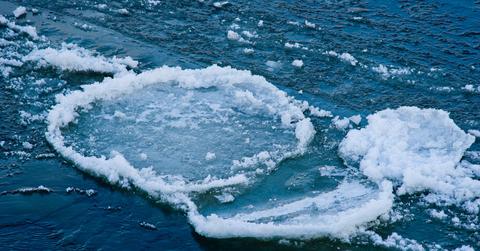Viruses And Bacteria Trapped In Ice Come Alive As Climate Warms
Last August, an outbreak in Siberia was caused by the melting of permafrost. Further research shows that climate change was the result of the occurrence, and many people are worried about how other diseases could be unleashed across the globe.
Updated May 24 2019, 3:50 a.m. ET
The rapid increase in climate change continues to offer up more negatives. Examples include changing normal weather patterns and fueling stronger hurricanes. Now it could be the cause of an increase in pathogens that have been trapped in ice, according to recent studies.
Last August, an anthrax outbreak decimated the animals and inhabitants of a small location in Siberia. Thousands of reindeer died from the disease, and it was them that spread it into civilization. Most people were affected, with 20 needing to be hospitalized, and one casualty of a 12-year-old boy.
A link to global warming was made when the outbreak was traced back to what was permafrost in the location. The disease was contained in frozen soil due to the rotting of an infected animal. Inside permafrost, any kind of bacteria, virus, fungus, and other types of nastiness can thrive.
Biologist Jean-Michel Claverie explained to BBC Earth how this was the case, saying, "Permafrost is a very good preserver of microbes and viruses, because it is cold, there is no oxygen, and it is dark...Pathogenic viruses that can infect humans or animals might be preserved in old permafrost layers, including some that have caused global epidemics in the past."
An area in Siberia isn’t the only place where these microorganisms are held at. There’s growing worry that an increase in global temperature will melt permafrost at a rapid rate, which can cause an outbreak among unsuspecting people. Other outbreaks in history have been buried with the dead in the frozen tundra and it wouldn’t take them long to spread when the ice melts.
For example, viruses from the 1918 Spanish flu were located in Alaska. Other bacteria in Antarctica that was well over 100,000 years old appeared in glaciers. Some bacteria that could be as old as 50,000 years was found in crystals located in Mexico this February. This creates another issue when it comes to exposing these old diseases. Not only is global warming creating this issue, but any type of mining in remote areas that contains permafrost can also trigger the organisms to come out.
Scientists also bring up that our immune systems may not be ready to block off these dangers. As generations go on, the human body’s defense grows weaker to diseases that it doesn’t see. For example, common colds can generally go untreated and they will still be gone within days. But for outbreaks that happened centuries ago, it could become a serious issue, especially with the unlikelihood that there would be treatments available.
While it’s scary to think that an outbreak can happen at any time, people don’t have to live in fear. In fact, most of it is very unknown and not all of it is equal. Scientists found viruses in 2014 but it had no effect on humans. Some argue that diseases located in warmer climates can migrate to northern areas as the globe heats up, and that could be a bigger short-term issue than the dangers of permafrost melting. Regardless, it’s more evidence that shows why climate change is a serious issue that can affect more than just weather.
